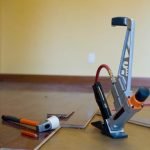With the increasing trend of remote work, more and more people are finding themselves in need of a functional and comfortable home office space. In this article, we will be discussing how to improve home office setup to create an environment that promotes productivity and well-being. A well-designed home office can make a significant difference in your daily work routine, and we will cover various aspects to consider when evaluating and upgrading your current workspace.
As remote work becomes the new normal for many professionals, the importance of having a designated area within the home for work has become increasingly evident. The layout, furniture, lighting, and overall organization of your home office can have a direct impact on your efficiency and comfort throughout the day. From ergonomic considerations to personalization and technology optimization, there are several factors to take into account when striving to create an ideal workspace.
In the following sections, we will guide you through assessing your current setup, prioritizing ergonomic furniture for improved comfort, decluttering and organizing your space for maximum efficiency, personalizing your environment for motivation, improving lighting and air quality, optimizing technology and connectivity, as well as creating boundaries and minimizing distractions. By implementing these tips and strategies, you can transform your home office into a productive and enjoyable space that supports your professional endeavors.
Assess Your Current Setup
When aiming to improve your home office, the first step is to assess your current setup. Start by evaluating your desk, chair, lighting, and overall organization. Consider the functionality and comfort of each element and identify areas that need improvement. Pay attention to how each component contributes to your overall well-being and productivity.
Take a look at your desk and determine if it provides enough space for your work tasks. A cluttered or insufficient workspace can lead to decreased efficiency and increased stress. The same goes for your chair – make sure it is comfortable, provides proper support for your body, and promotes good posture. Additionally, assess the lighting in your home office. Proper lighting is crucial for reducing eye strain and maintaining focus throughout the day.
Consider creating a simple checklist to guide you through this assessment process. This will help you prioritize areas that need immediate attention as you work towards a more functional and comfortable home office space.
| Ergonomics Tips | Comfort Tips |
|---|---|
| Invest in an adjustable ergonomic chair | Add a cushion or blanket for extra comfort |
| Use a standing desk or adjustable desk converter | Consider adding a footrest for better posture |
| Position monitor at eye level to reduce neck strain | Incorporate soft lighting for a cozy atmosphere |
Ergonomics and Comfort
When it comes to creating an efficient and comfortable home office, prioritizing ergonomics is key. Here are some tips on how to improve home office ergonomics and comfort:
- Invest in a high-quality ergonomic chair that provides proper support for your back and encourages good posture. Look for features such as adjustable seat height, lumbar support, and armrests.
- Consider using a standing desk or a convertible desk that allows you to alternate between sitting and standing throughout the workday. This can help reduce the negative effects of prolonged sitting and improve circulation.
- Position your computer monitor at eye level to prevent neck strain. Use a monitor stand or adjustable arm to achieve the optimal viewing height.
- Utilize ergonomic accessories such as a keyboard tray, wrist rest, and footrest to minimize discomfort and strain during long hours of work.
Improving ergonomics in your home office not only enhances comfort but also promotes better productivity and overall well-being. By following these tips, you can create a workspace that supports your physical health while optimizing your performance.
Remember to take regular breaks, stretch, and move around to avoid stiffness and fatigue. Incorporating these ergonomic principles into your home office setup will lead to a more enjoyable and effective work environment.
Declutter and Organize
A cluttered and disorganized home office can significantly impact productivity and increase stress levels. To improve your work environment, it is essential to declutter and organize your space effectively. Start by evaluating the items in your office – if you haven’t used something in the last six months, consider whether it truly belongs in your workspace. Clear out unnecessary papers, supplies, and equipment to create a more functional and efficient setup.
Once you have decluttered, it’s time to organize your remaining items. Invest in storage solutions such as shelves, filing cabinets, or desk organizers to keep everything orderly and easily accessible. A well-organized home office not only looks better but also helps you stay focused by reducing visual distractions.
Creating a designated spot for each item will help streamline your workflow and make it easier to find what you need when you need it. By taking the time to declutter and organize your home office, you can create a more peaceful and productive work environment.
| Benefit | Implementation |
|---|---|
| Increased productivity | Clear out unnecessary items regularly |
| Reduced stress | Invest in storage solutions |
| Better focus | Create a designated spot for each item |
Personalize Your Space
Working from home can sometimes make it challenging to stay motivated and focused, especially when your work environment lacks personality and inspiration. Personalizing your home office space is a great way to boost your morale and creativity, ultimately leading to enhanced productivity. Here are some ideas on how to add personal touches and decor to create a motivating and inspiring work environment:
- Display photos or artwork that bring you joy and motivation
- Incorporate plants or flowers to add a touch of nature to your workspace
- Choose a color scheme that resonates with you and promotes positivity
- Invest in comfortable and stylish furniture that reflects your taste
Personalizing your space doesn’t have to be expensive or time-consuming, but it can make a significant difference in how you feel about where you work every day. By surrounding yourself with items that bring you happiness, you’ll find it easier to stay focused and energized throughout the workday.
In addition to decorating with personal items, consider adding elements that reflect your hobbies or interests. For example, if you’re a music enthusiast, incorporate a small record player or musical instruments into your workspace. If you’re an avid reader, create a cozy reading nook within your office area. Integrating these personal elements will make your home office feel like more than just a place of work-it becomes an extension of who you are.
Remember: by creating a personalized space that speaks to your individuality, you’re not only enhancing the aesthetics of your home office but also promoting a positive mindset for better overall performance in your remote work endeavors.
Improve Lighting and Air Quality
Maximizing Natural Light
One of the most effective ways to improve the lighting in your home office is to maximize natural light. Position your desk and work area near a window to take advantage of natural sunlight, which not only provides better illumination but also has mood-boosting benefits. Consider using sheer curtains or blinds that allow light to pass through while reducing glare on screens.
Proper Lighting Solutions
In addition to natural light, it’s essential to have proper artificial lighting in your home office. Invest in a good desk lamp or overhead lighting that provides adequate brightness without causing eye strain. Adjustable lighting options are also beneficial for different tasks throughout the day, such as reading documents or typing on a computer.
Air Quality Improvement Strategies
Improving the air quality in your home office can have a significant impact on your overall well-being and productivity. Open windows regularly to let fresh air circulate, and consider adding indoor plants known for their air-purifying properties. If necessary, invest in an air purifier to reduce allergens and pollutants, creating a healthier work environment.
By focusing on improving the lighting and air quality in your home office, you can create a more comfortable and conducive workspace that enhances both focus and well-being. These are essential elements for anyone looking to optimize their remote work setup and productivity levels.
Technology and Connectivity
Reliable Equipment and Connectivity
Having reliable technology and internet connection is crucial for a functional home office. Assess the quality and performance of your current equipment, such as your computer, printer, and other necessary devices. Slow or outdated technology can hinder productivity and cause frustration. Consider upgrading to more efficient and reliable equipment to improve your work-from-home experience. Additionally, assess your internet connectivity to ensure that it meets the demands of remote work, including video conferencing, large file transfers, and online collaboration.
Optimizing Wi-Fi Coverage
A strong and stable Wi-Fi signal is essential for seamless communication and task completion in a home office. Consider the placement of your router to ensure comprehensive coverage throughout your workspace. If certain areas of your home office have weak Wi-Fi reception, invest in a Wi-Fi extender or mesh network system to improve connectivity. Additionally, protect sensitive information by securing your network with a strong password and enabling encryption.
Ensuring Data Security
Protecting sensitive data is paramount when working from home. Take steps to secure your digital information by using antivirus software, firewall protection, and regular data backups. Implement secure access controls to prevent unauthorized individuals from accessing confidential files or systems. Furthermore, be mindful of potential cybersecurity threats such as phishing scams and malware attacks. Educate yourself on best practices for staying safe online and consider seeking professional assistance if necessary.
By addressing these technology and connectivity considerations, you can create a more efficient and productive home office environment that supports your remote work needs.
Create Boundaries and Distractions
When working from home, it can be challenging to create a clear divide between work and personal life. This is why it’s crucial to establish boundaries and minimize distractions within your home office.
One way to do this is by designating a specific area in your home for work, ideally a separate room or corner where you can focus without interruptions. Setting physical boundaries in this manner can help signal to yourself and others that when you are in this space, you are “at work”.
Another important aspect of creating boundaries is setting clear work hours and sticking to them as much as possible. Communicate these hours with family members or roommates so they understand when you should not be disturbed unless absolutely necessary. Additionally, take breaks and step away from your home office during off-hours to reinforce the separation between work and personal time.
Minimizing distractions within your home office space is also essential for maximizing productivity. This may involve turning off notifications on your phone or computer, establishing “do not disturb” hours, or investing in noise-cancelling headphones to block out background noise. By identifying potential distractions and proactively addressing them, you can create a more focused and productive work environment within your home office.
Creating boundaries and minimizing distractions within your home office is crucial for maintaining a healthy work-life balance. Following these strategies can lead to increased productivity, reduced stress, and an overall improved well-being while working remotely. By implementing these tips on how to improve home office boundaries and reduce distractions, individuals can create a more conducive environment for their professional endeavors within the comfort of their homes.
Conclusion
In conclusion, creating an effective and comfortable home office is essential for individuals who work remotely. By assessing current setups, prioritizing ergonomics and comfort, decluttering and organizing, personalizing the space, improving lighting and air quality, optimizing technology and connectivity, and establishing boundaries, individuals can cultivate a productive and empowering work environment right at home.
Taking the time to evaluate and improve your home office setup can have a significant impact on your overall well-being and productivity. Whether it’s investing in an ergonomic chair that provides proper support or adding personal touches to create a motivating atmosphere, small changes can make a big difference. Additionally, optimizing technology and connectivity while setting boundaries to minimize distractions are crucial steps toward creating a more efficient work environment.
Ultimately, by following these tips on how to improve your home office, you can create a space that not only supports your professional endeavors but also contributes to your overall quality of life. It’s important to remember that everyone’s needs and preferences are different; therefore, it may take some trial and error to find what works best for you personally.
However, with dedication and effort, you can transform your home office into a space that promotes both productivity and well-being.
Frequently Asked Questions
How Can I Make My Home Office More Efficient?
Making your home office more efficient starts with decluttering and organizing the space. Utilize storage solutions like shelves and bins to keep things tidy. Additionally, invest in ergonomic furniture and set up systems for managing paperwork to increase productivity.
How Can I Make My Home Office Nicer?
To make your home office nicer, focus on adding personal touches that inspire you. Consider incorporating plants, artwork, or decorative items that reflect your style and create a pleasant work environment. Keep the space well-lit and add comfortable seating for guests if needed.
How Can I Maximize My Home Office?
Maximizing your home office involves optimizing the layout for functionality. Arrange furniture to facilitate smooth workflow and designate specific areas for different tasks, such as a dedicated workspace, storage area, and meeting space if applicable. Use technology to streamline processes and minimize physical clutter wherever possible.

I’m thrilled to have you here as a part of the Remodeling Top community. This is where my journey as an architect and remodeling enthusiast intersects with your passion for transforming houses into dream homes.





